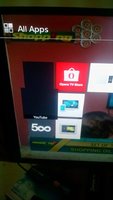No problem.
Not just the idea. Even in practice, the image quality of a fully calibrated UHD tv looks nothing short of spectacular. You have to actually see one, in person to actually appreciate it.
You can't compare current 8-bit panels to 10-bit and 12-bit panels, which is what you are doing by drawing comparisons to Sony Bravia W900. What you are referring to is Live Colour and that's not the same thing. The W900 conforms to the rec. 709 HDTV standard. It cannot go beyond that. If it does, colours will be over saturated if not calibrated professionally. Making the image vivid but inaccurate.
Rec. 2020 is the UHD standard. Offering you a much wider range. When properly calibrated colours won't look saturated but more realistic. And no, a properly calibrated tv should not be dull, it should be accurate. It is the way the image is meant to be perceived.
The problem is, there are so many poorly calibrated screens, that when a properly calibrated one, in a low to moderately lit environment, placed next to it, will look dull in comparison. The first thing you need to do is turn off EVERYTHING. Don't use any feature of your LED tv. Then professionally calibrate it to get the most accurate image possible.
HDR and WCG is an amazing leap forward. Exciting times are ahead, for sure. You are confusing that with Dolby Vision. Forget about Dolby Vision for the time being. HDR 10 is where it is at right now. Dolby Vision will only improve and get cheaper to implement, but not right now. Not on a consumer level anyway.
Oled is great, but pricey. The cost of an UHD OLED with all the bells and whistles costs more than $30,000. I'll stick to LED. And it does not have a short lifespan. It's long enough to last a typical household under normal use for many years.

